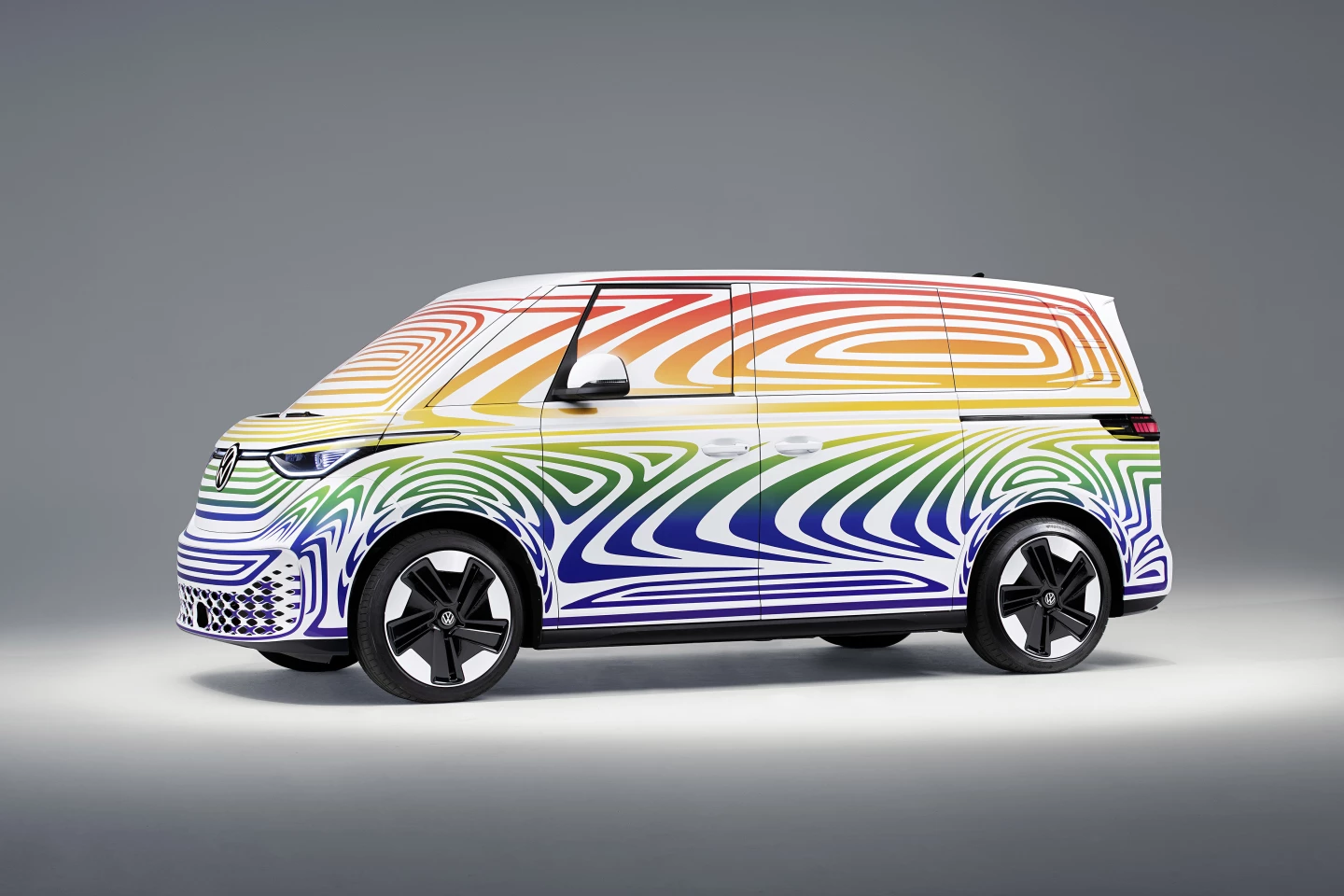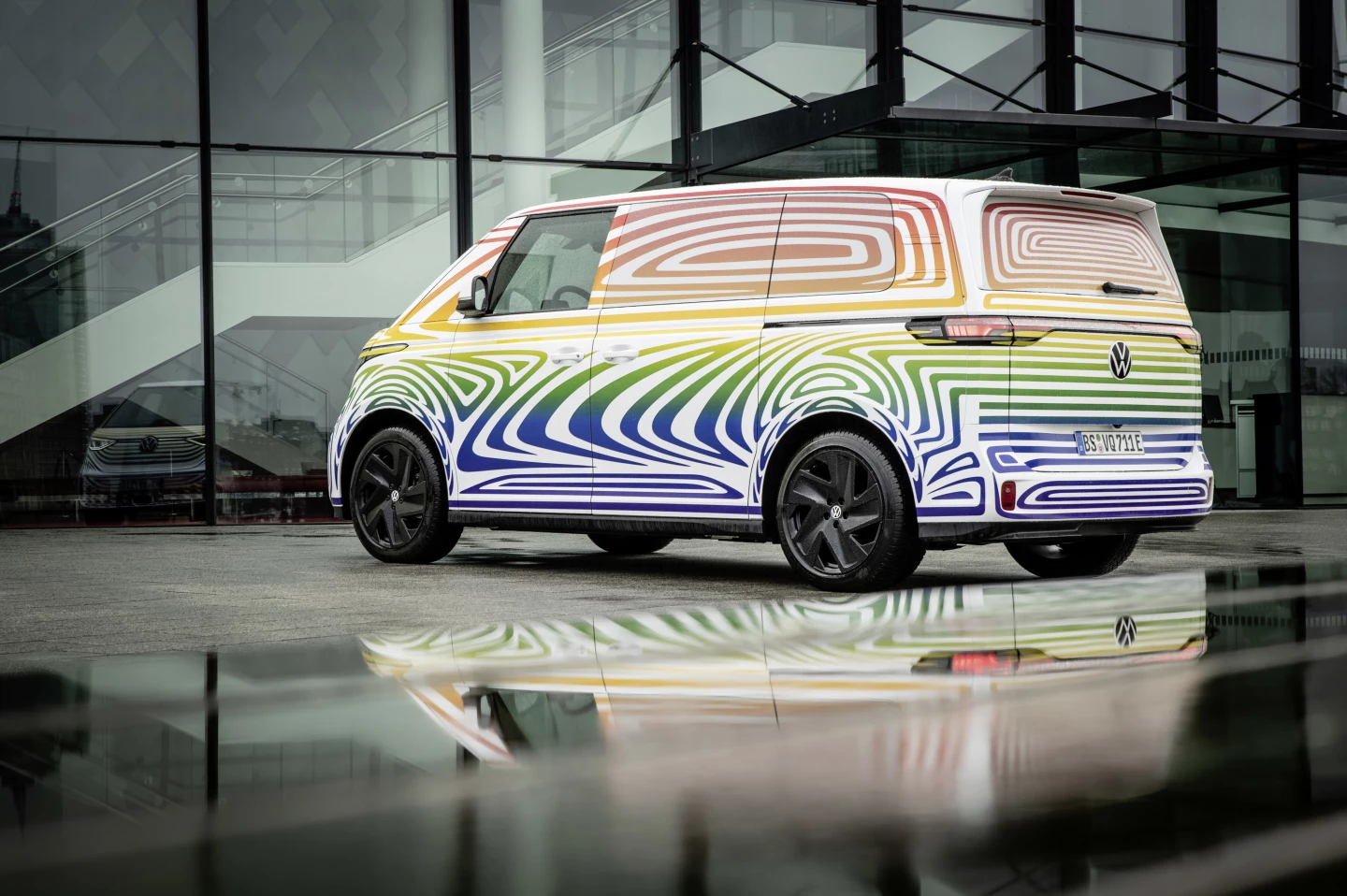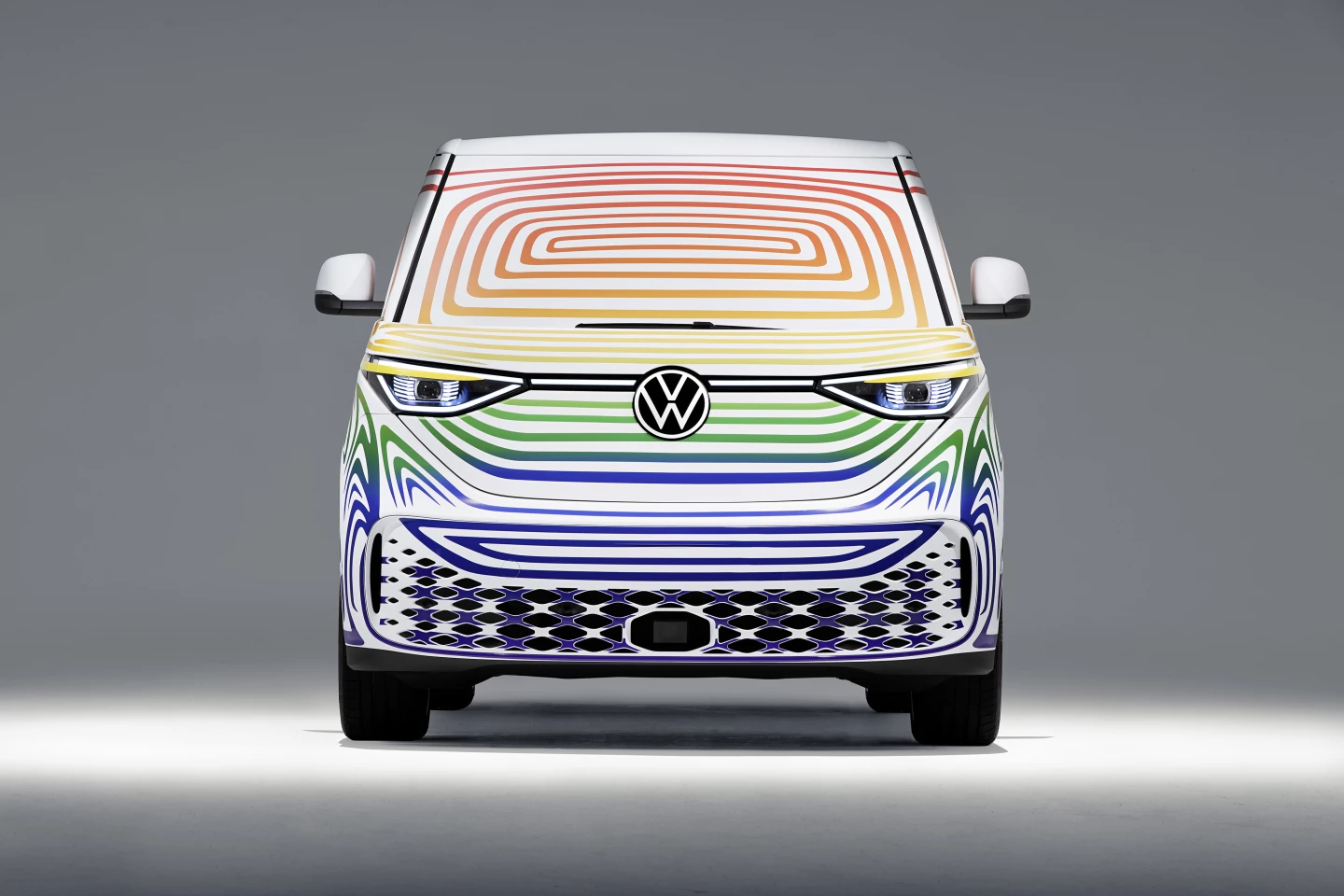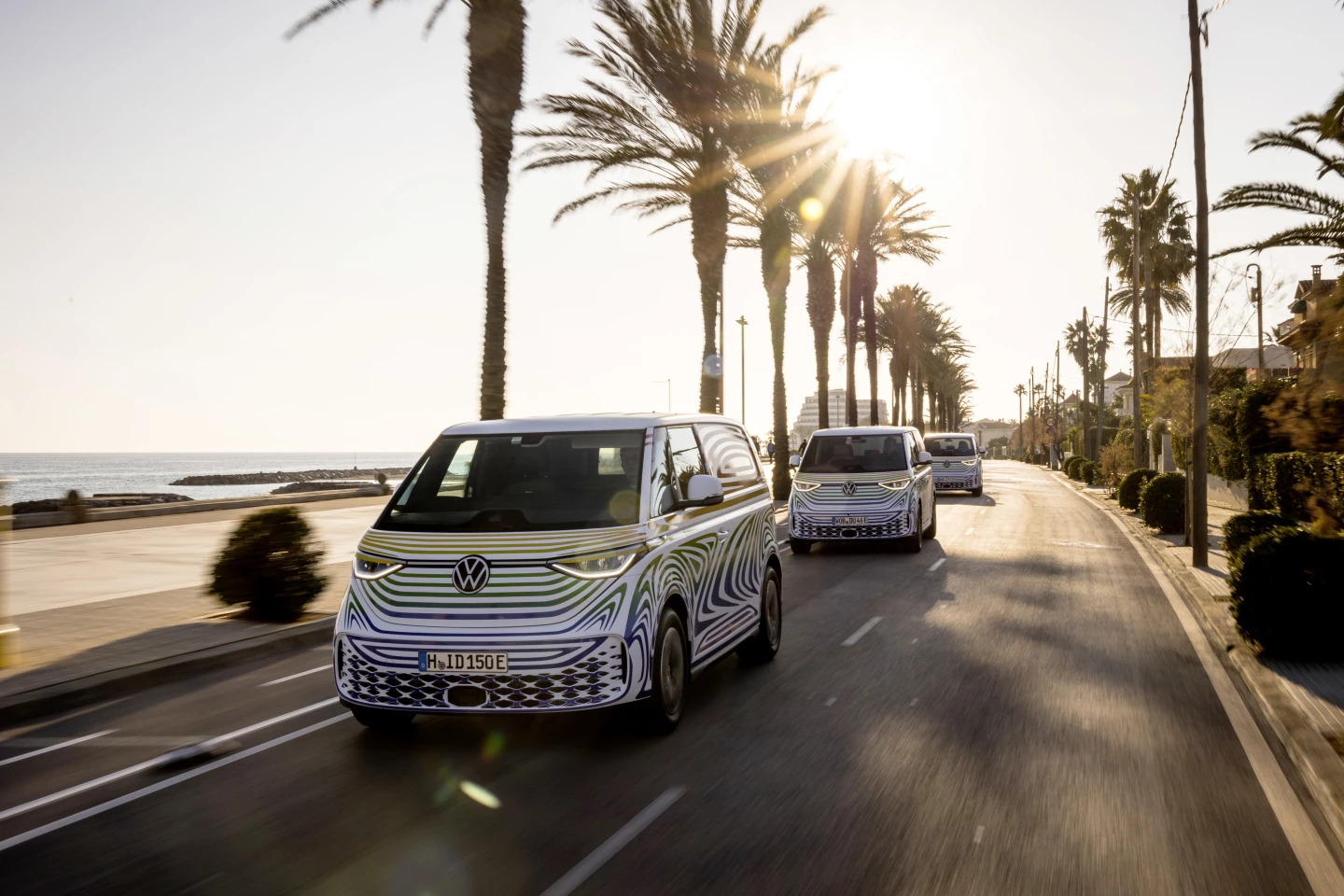Time flies. It's been over five years since Volkswagen jumpstarted the young, barely-awake year of 2017 with the debut of the ID. Buzz concept, a 21st century all-electric spiritual successor to the T1 and T2 Microbuses beloved across the world by everyone from original hippies to modern-day digital nomads. Since then, VW has very slowly and methodically developed the ID. Buzz, giving it the official green light, showing additional concept versions, exploring autonomous capabilities and ultimately getting it ready for a 2022 introduction that will happen in just a few weeks. In fact, Volkswagen will reveal not just a single ID. Buzz but both passenger and cargo versions ahead of launching the van in Europe and bringing it back to the United States.
Volkswagen is currently performing the final road tests on lightly (but brightly) camouflaged preproduction ID. Buzz vans across Europe. It will host its double-premiere on March 9, revealing both the five-seat ID. Buzz passenger van and the three-seat ID. Buzz Cargo.
The standard 2,988-mm-wheelbase (118-in) ID. Buzz models that will debut first are well shorter than current Volkswagen midsize vans, measuring in at 4,712 mm (185.5-in) long, which is 261 mm (10.3 in) shorter than the 4,973-mm-long (196-in) standard-wheelbase T7 Multivan, 192 mm (7.6 in) shorter than the 4,904-mm-long (193-in) standard-wheelbase T6.1, and shorter, even, than the 4,853-mm (191-in) long-wheelbase Caddy Maxi small van.

The ID. Buzz passenger van has 1,937 mm (76.3 in) of height to go along with that length and 1,985 mm (78.1 in) of width, making it 33 mm (1.3 in) lower and 81 mm (3.2 in) wider than the T6.1. The Buzz Cargo has the same width but stands 1 millimeter taller owing to chassis differences. Wheel options will include big, ol' 18- to 21-inchers.
Volkswagen boasts that it's able to make the most out of the shorter footprint with help from its MEB architecture, installing a comparably sized interior in a van that's easier to maneuver and park. The passenger version will offer more than 1.1 cu m (39 cu ft) of cargo space with all seats occupied, while the more capacious partitioned-off load area of the ID. Buzz Cargo will up the ante to 3.9 cu m (137.7 cu ft).

Like the original VW Microbuses, the ID. Buzz comes powered at the rear. With electricity flowing from the 82-kWh battery pack, the rear axle-integrated electric motor puts out up to 201 hp (150 kW) and 229 lb-ft (310 Nm) of torque. Volkswagen says that top speed will be electronically limited to 90 mph (145 km/h) and points out that range estimates are not yet available.
Styling-wise, our eyes are still kept in check by the colorful full-body wrap, but Volkswagen promises that its design team worked hard to stay true not only to the 2017 Buzz concept car but also to the T1 that inspired it. That work included keeping the overhangs short, dividing the body into clearly delineated upper and lower sections, which we suspect will be painted individual colors, and maintaining a V-shaped face.
The ID. Buzz also shows a similar short, barely-there front-end. The front and rear lighting have gotten more traditional designs in preparation for production, and certain elements like the windshield-hood transition and lower grille lip are more crisp-edged and pronounced than on the curvaceous concept. We'll see how it all comes together when they rip the rainbows off.

Like other recent EV debuts, including the Ford F-150 Lightning and Chevy Silverado EV, the ID. Buzz will offer bidirectional charging capabilities so that it can both charge from the owner's home and feed power back. Volkswagen uses the example of storing energy from roof-mounted solar panels during the day and supplying it to the home at night.
Volkswagen's e-bus won't launch with the type of full-blown autonomy the concept previewed, but it will include technologies like Car2X communications, a trained parking feature for self-maneuvering into and out of parking spaces, and the newest version of VW's "Travel Assist" adaptive cruise control with lane-keeping. Over-the-air updates will evolve its capabilities over time and keep its tech up to date.

Volkswagen plans to begin ID. Buzz production in the first half of 2022, launching the van in Europe in September. Additional variants, including the long-wheelbase model that will be sold in the US, will be added thereafter. And those models will include a confirmed ID. California camper van version.
We'll have the full package of details on March 9.
Source: Volkswagen



















